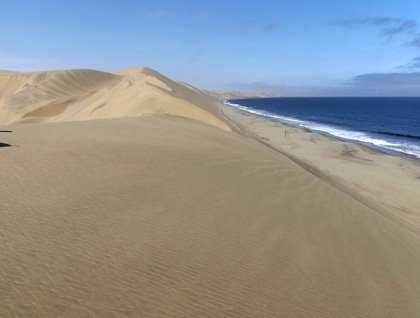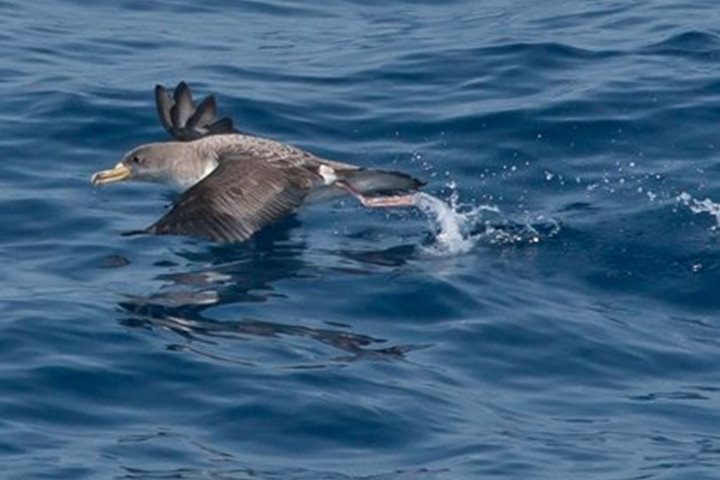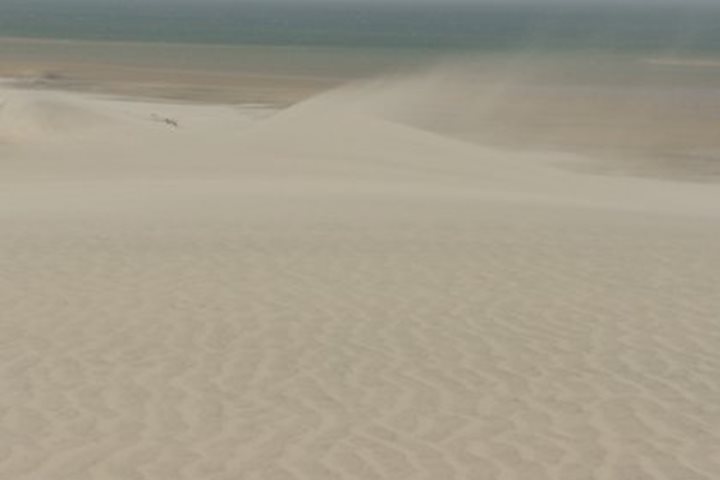Today was the second of two incredible days spent in and around Walvis Bay. We needed two days here in order to take advantage of a multitude of interesting activities available in this region. During our time spent berthed in Walvis Bay, people had opportunities to explore the various aspects of the surrounding desert, view incredible concentrations of birds in the coastal flats, cruise the large natural bay by catamaran, and visit the cities of Walvis Bay, Swakopmund, and the informal township of Mondesa. All this kept everyone very busy during our time here.
This region of Namibia has some very impressive transverse or longitudinal sand dunes and most everyone had the experience of driving off-road in the sand with the numerous four-wheel-drive Range Rovers and Land Rovers. It was a little unnerving at times whizzing around up and over and along the sides of the high dunes, but the locals taking us around do this sort of thing all the time. Even so, it is wise to always travel in groups, because different vehicles got stuck several times and had to be pulled free by other vehicles.
In what first appears to be barren coastal desert, we soon learned has an abundance of wildlife. The shallow coastal flats south of Walvis Bay compose one of the most important wintering grounds of Atlantic shorebirds and seabirds. This importance has even been enhanced by the local salt industry, which helps these birds through the regulation of water depths within the impounded salt pens. The production of salt, which is the most important industry of Walvis Bay, is conducted through simple evaporation of sea water. This process inadvertently creates additional ideal feeding areas for the myriad shorebirds that pass through the region. We identified dozens of species concentrated among the shallow salt flats and evaporation pens, but the numbers of individual birds observed was absolutely mind-boggling.
The most famous denizens of Walvis Bay are unquestionably the flamingoes, of which there are two species…conveniently named greater and lesser flamingoes. As should be expected, the larger, whiter ones are greater and the smaller, pinker ones are lesser. There are hundreds of thousands of them to be found here this time of year, although neither species actually nests in the region. In fact, almost none of the species of birds encountered here today breed here…surprisingly, many of them breed in the Arctic. This demonstrates the importance of this area to migratory birds that must seek productive feeding grounds outside their breeding sites.
Similarly, the offshore waters are cold and rich in productivity, and of great importance to both seabirds and marine mammals, particularly Cape fur seals. However, unlike the aforementioned shorebirds, the fur seals do breed here. There are more than 200,000 of them to be found along this coast. Many people partook in a catamaran cruise around the extensive bay and we had ample opportunities to view the fur seals both on land and in the water, where it is always fun to watch their incredibly acrobatic swimming abilities. It almost seems as though they have no bones in their bodies when they spin and twist and leap about.
We definitely had an adventurous and exciting time these past two days, and it was with heavy hearts that we set sail from Walvis Bay this evening…but more adventures are coming.







